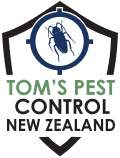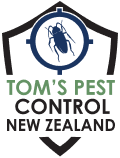Redback spiders have black bodies with a distinctive red stripe on the underside of their abdomens. They are relatively small to medium-sized spiders, with females having a body length of about 1 cm, while males are smaller, typically measuring only 3-4 mm. The female redback spider can be identified by its spherical abdomen.
About the Redback Spider
The redback spider, scientifically known as Latrodectus hasselti, is a venomous spider that belongs to the same family as the black widow spider. Redbacks are identifiable by the distinctive red hourglass-shaped marking on their abdomen’s underside. They are commonly found in urban areas, particularly around human habitation, and prefer to construct their webs in dark, secluded locations such as sheds, garages, and outdoor restrooms. Although their venom is poisonous, redback spider bites are seldom life-threatening since an effective antivenom is readily available.
Redback spiders are endemic to Australia and have not established breeding populations in New Zealand. However, it’s important to note that there have been occasional reports of redback spiders being accidentally transported to New Zealand through various means, such as in cargo or personal belongings.
In such cases, if redback spiders are discovered in New Zealand, they are typically found in urban areas or industrial sites where goods are imported or transported from Australia. These spiders can hide in dark, sheltered areas like shipping containers, vehicles, or other cargo, allowing them to survive the journey and potentially establish temporary populations in New Zealand.
It’s crucial to remain vigilant and take appropriate precautions when handling imported goods or materials that may have come from areas where redback spiders are known to inhabit. If a redback spider is suspected or discovered in New Zealand, it is important to report the sighting to local authorities or pest control agencies for appropriate identification, monitoring, and control measures.
Redback Spider Bite
A bite from a redback spider can result in severe pain and discomfort due to its venomous nature. The neurotoxin present in the venom affects the nervous system and can cause symptoms such as sweating, muscle weakness, severe pain, nausea, and vomiting. In extreme cases, the bite may cause complications such as irregular heartbeat, high blood pressure, and muscle breakdown. Therefore, if you suspect a redback spider has bitten you, it is critical to seek immediate medical attention. Treatment may involve administering antivenom, pain relief, and hospitalisation for close monitoring and observation of symptoms.
Reacting to a Redback Bite
Here’s what you can do to reduce the severity of symptoms:
- Clean the bite area with water to minimise the risk of infection.
- Apply a pressure immobilisation bandage. This involves wrapping a bandage tightly around the bite area and working upwards towards the heart. This technique can help slow the spread of venom and reduce the severity of symptoms.
- If you experience severe symptoms such as difficulty breathing, chest pain, or loss of consciousness, go to the nearest hospital or call an ambulance immediately.
Redback Spiders and Pets
Redback spiders can pose a serious threat to pets due to their venom. If a redback spider bites a pet, immediate veterinary attention is crucial. Symptoms of a redback spider bite in pets may include difficulty breathing, muscle weakness, tremors, and vomiting. Treatment may consist of antivenom, pain relief, and supportive care. To minimise the risk of spider bites, it is essential to keep pets away from known redback spider habitats and regularly check and clean outdoor areas such as sheds and garages where they spend time.
How Should You React If You See a Redback Spider?
It is important to exercise caution and avoid disturbing it, as this could increase the risk of being bitten. Keeping a safe distance is the best approach. If a redback spider is found in your home, contacting a pest control professional is recommended to remove it safely. Taking preventative measures to reduce the likelihood of spiders entering your home is also important, such as removing clutter and repairing any cracks or gaps in the walls to not give them entry points to your property.
Speak to Us Today
If you have spotted a redback spider on your premises, contact us immediately to have it safely removed.
Frequently Asked Questions
How Can You Eliminate Redback Spiders from Your Property?
To eliminate redback spiders from your property, it is essential to maintain a clutter-free yard and garden by removing woodpiles, rocks, and debris that provide ideal spots for redback spiders to build their webs. Sealing any openings, such as cracks and crevices around doors, windows, and other entry points, is crucial to prevent redback spiders from entering your home. To avoid attracting insects that redback spiders’ prey on, keep food and trash in containers with tightly fitting lids. Since redback spiders are venomous, it is recommended to hire a professional exterminator to safely remove them from your property.
What Is the Number of Legs on a Redback Spider?
Redback spiders have eight long and thin legs with a segmented appearance. The first pair of legs is typically the longest, while the remaining legs become progressively shorter. The legs are dark brown to black and approximately 2 to 3 times their body length.
How Dangerous Are Redback Spiders?
Redback spiders possess venom, and their bites can cause pain. Therefore, Redback spider bites can be hazardous when they bite small children, older adults, and individuals with weakened immune systems. Nonetheless, fatalities resulting from redback spider bites are rare, and antivenom is available. If you believe a redback spider has bitten you, seek medical attention immediately.

